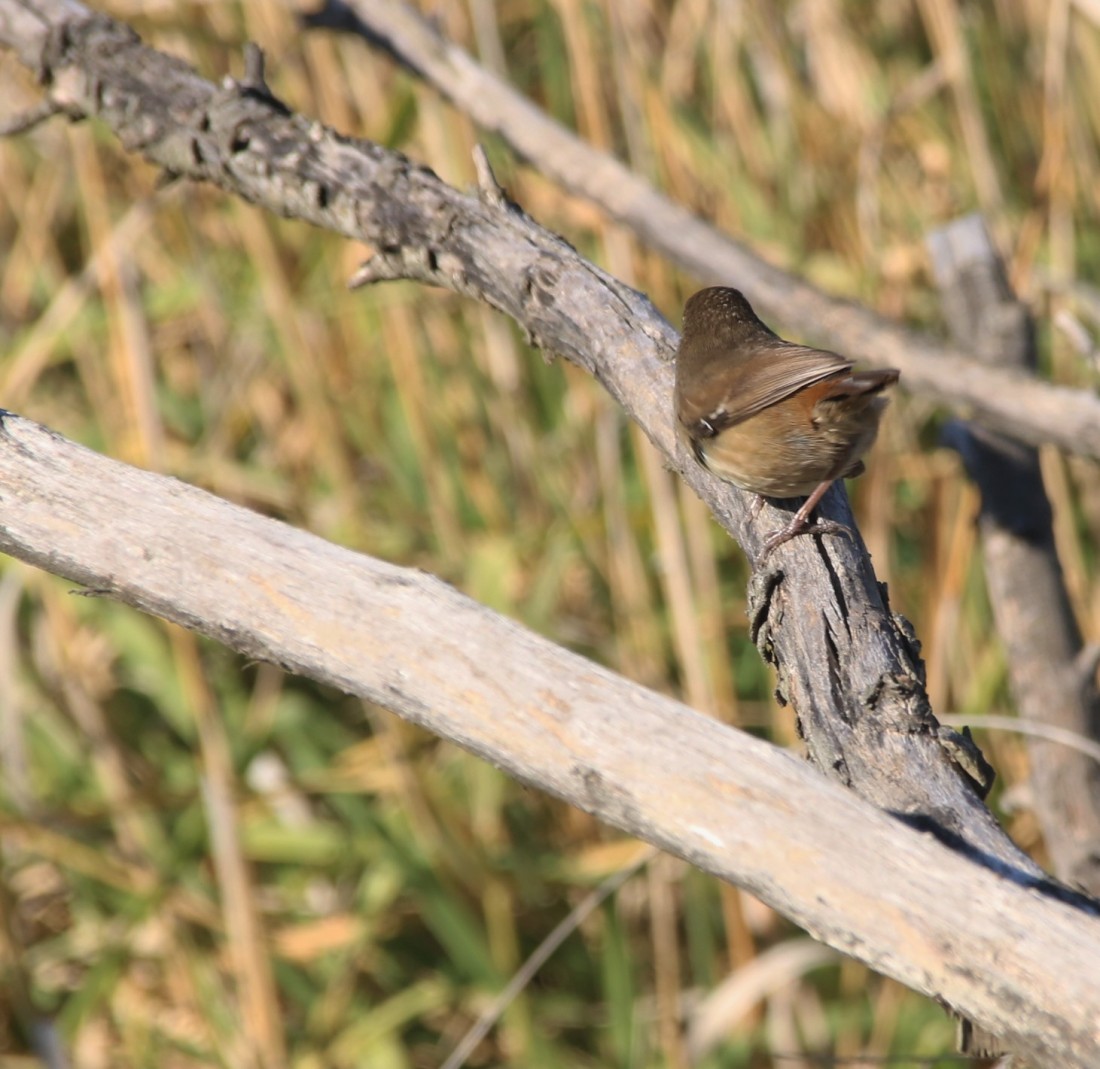Pretty quiet in winter at the Wetlands, but over a few trips have spotted some new and some rare appearances.
The Golden-headed Cisticola, one of the so-called Old World Warblers, is apparently at the edge of its range around here, but the high reeds and water suit it. This was the first time I had seen one, and as best I could tell, there seemed to be only one.
Another rare sighting, although you often hear them here, is the Little Grassbird. Rarer still for it to sit still long enough for a photo opportunity – and true to form this one didn’t quite.

The Red-Browed Finches are often around and are fairly unconcerned by human presence. They were certainly hoeing into the late autumn reed seeds.
Similarly, Superb Fairy-Wrens are common and tolerant.

Rare visitors right in the Wetlands are Yellow-Tailed Black-Cockatoos, which normally hang about in huge Casuarina Pine stands a kilometer or so away.
The colourful Red-Rumped Parrots are also common here. The male is much more colourful than the female, she more sedately stylish.
Black-Shouldered Kites frequent and nest here. This looks like one of the youngsters checking out his home.
Spotted Doves seem to be another of the birds moving in greater numbers into new territory after the bushfires along the eastern and south-eastern coasts. I have also seen them in my garden in Canberra for the first time, along with huge numbers (70 at a time) of Sulphur-Crested Cockatoos and (30 at a time) of Rainbow Lorikeets. Not before this year have they been in this part of Canberra in anything like those numbers.
Also it is the first time in many years coming here I have seen WoodSwallows here. These are Black-Faced Woodswallows, quite cuddly looking and so they are in practice.

Quite common in the Wetlands are Black-faced Cuckoo-Shrikes, White-faced Herons, White-Browed Scrubwrens and Straw-necked Ibis.
 More first sightings anywhere for me were the Yellow-Rumped Thornbill:
More first sightings anywhere for me were the Yellow-Rumped Thornbill:
The Brown Thornbill:

And the Yellow-faced Honeyeater:

So with a bit of patience, and time, the Wetlands always go from there’s nothing there to a nice collection.
June 2020
michaelmonaghanphotography.com






































Hi Michael,
Hey, those are great pictures of the Golden-headed Cisticola, they are often very difficult to get good pictures of as they are constantly moving. Same goes for the Yellow- rumped Thornbill. The woodswallows and finches were also pretty cute.
Unfortunately we are all under lock down again. Needs to be done of course as this is the only way to stop covid-19 spreading. We were hoping to get up to the Iron Ranges later in the year but whether this eventuates depends on how quickly we can suppress the virus.
Cheers, Caroline
LikeLike